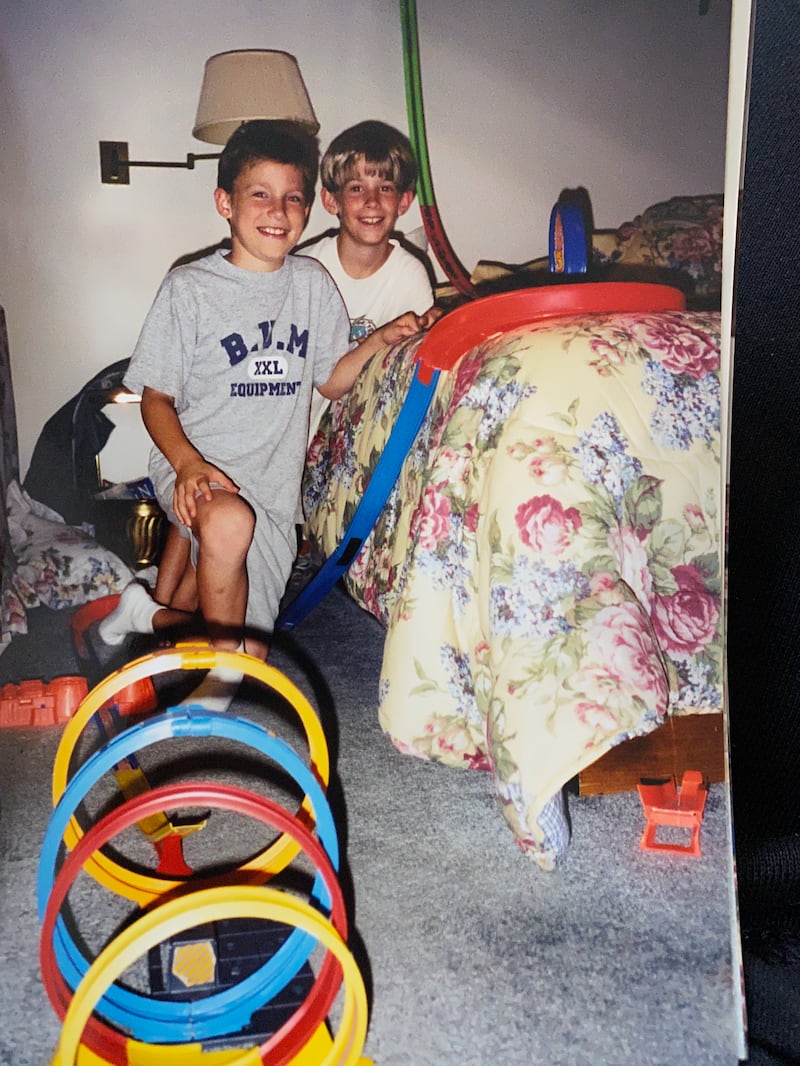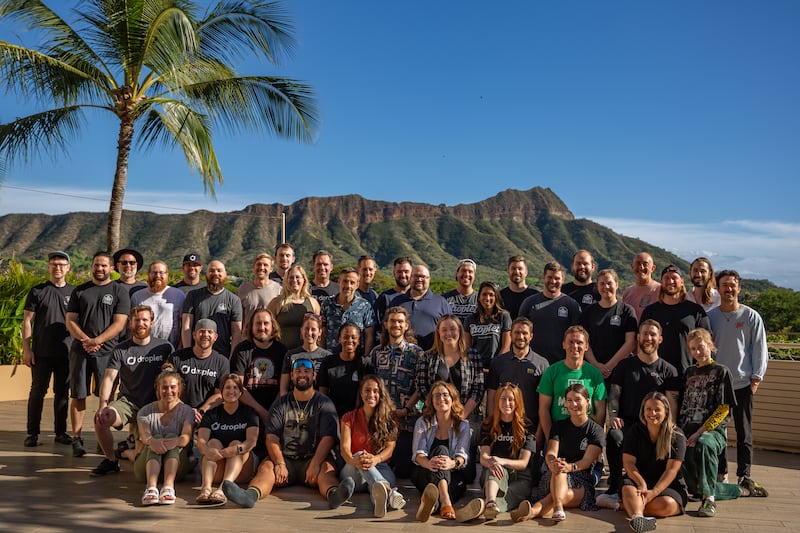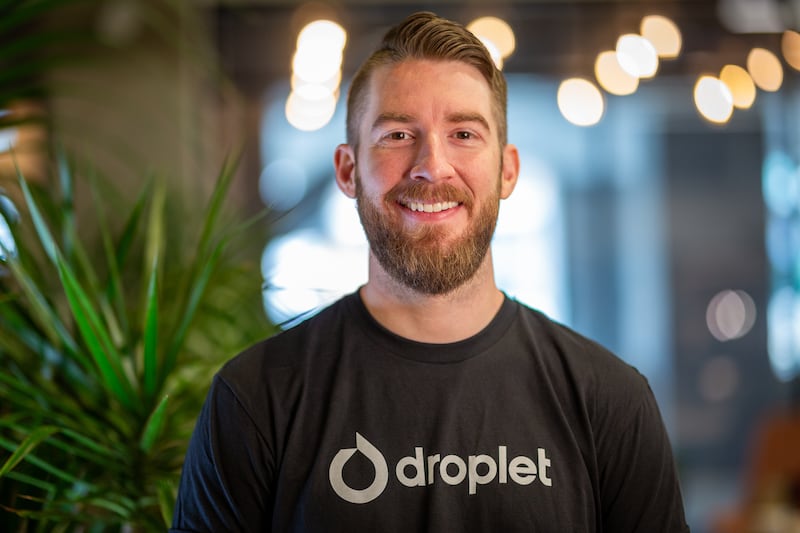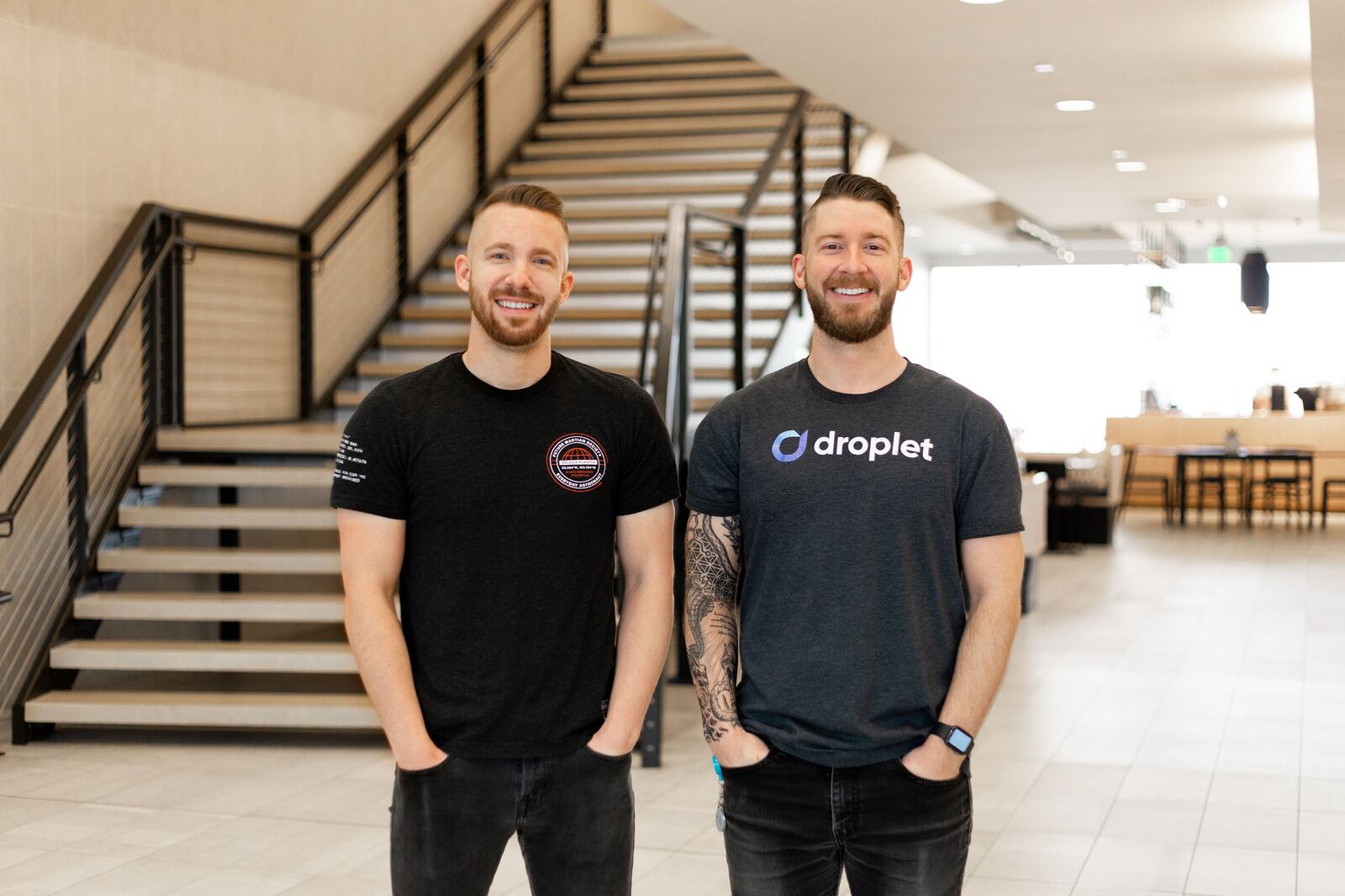Thirty years ago, I met my lifelong best friend, Skyler (Sky) Hair. Sky and I grew up in Orlando, Fla., and were “Halo” junkies. We completed Malcolm Gladwell’s 10,000 hours rule many times over with how much we played it. At one point, Sky ranked among the top 50 players in the world and he carried me through a few doubles tournaments. Little did we know that those high-pressure situations, where we had to strategize and communicate to succeed, were preparing us to eventually run a company.
When Sky decided to move to Utah to go to Brigham Young University, I tagged along. Shortly after, I had my first exposure to the tech industry when the girl I was dating at the time suggested I get a “real job” and recommended Qualtrics. I’ll never forget my first day walking into the office — exposed brick, glass everywhere, no cubicles, dogs and skateboards roaming the floors, cereal bar, dope swag and a palpable energy that you could just feel in the air. It was a stark contrast between the stuffy corporate offices and the “casual Friday” environment I saw my parents work in. Right away, I knew I’d spend the rest of my life in tech.
I helped co-found Qualtrics’ K-12 team and took the software into a brand new market: school districts. I loved the experience and I knew Sky would, too, so I urged him to apply. That is where his engineering journey began.

In my four years at Qualtrics, I became the top billing K-12 rep and a president’s club attendee. I was recruited by Lucid Software to help grow their newly formed K-12 sales team. I was fired (story for another day) and joined Nectar, an employee recognition company, as VP of sales.
This is where I was really bit by the startup bug. At the time, we were a small team of 10 crammed together in a $500/month space at the Small Business Development Center, working on mostly donated furniture. Figuring out how to turn nothing into something and solving new challenges every day was the most fun I’d ever had working.
Sky had his own ideas, however, and he had been putting a bug in my ear about them. After working for a handful of startups as either CTO or head engineer, he thought we could create a venture all our own — he’d build the thing and I’d sell it. He said many founders weren’t building their software correctly or took too many shortcuts. He was confident we could do it better.
Working at Nectar allowed me to see what a small startup might look like, so I agreed with him, and we began building together. In the middle of making soft plans, COVID-19 hit, causing Nectar to lay off almost everyone, myself included. Sky and I looked at each other and had the same thought: Now was the time to start a software company.
Sky had known for years that he wanted to start a business and had been saving and waiting for the right moment. I had two rental properties and planned to live off a $1,000/month income, moving into his garage to save money. I applied at Domino’s to earn extra cash as a delivery driver, but was rejected for too many speeding tickets. We put my bed in a corner, installed an A/C unit, put two desks against the wall and asked ourselves, “OK, what are we going to build?”
No more paper
In my time working with school districts, I heard a recurring problem: They utilized way too much paper to run their business operations. If a teacher wanted to buy school supplies, they would often need to fax a document to multiple people or print out a purchase request and mail it to another building for approval. It took forever, and papers often got lost or damaged. What if we built a form builder with fully automated approval workflows? That way, we could help schools move away from paper entirely.
With COVID in full swing, school districts were going remote for the first time ever and paper-based processes were becoming an even bigger problem. The timing to offer a solution could not have been more perfect. We also believed that after we solved this problem for schools, we could go to banks, health care providers, nonprofits and everywhere else, eliminating all paper-based, manual processes for good.
The first day Droplet was incorporated, I started cold-calling every school district in the country. Because we’ve always had a presale product philosophy in place, Sky started writing his first lines of code for our software on that first day as well. It wasn’t long before Provo School District responded.
We hopped on a Zoom call, and they asked what Droplet could do for them. We weren’t exactly sure yet, so I asked, “What do you need it to do?” They asked if it did electronic signatures, and Sky said it could. “Would it allow for multi-step, conditional approvals?” I looked to Sky, and he shot me a thumbs up. That call helped us outline the first five core features we needed to build that are still our core features almost 5 years later.
The school district became our first customer, and we started working on one of their most painful back-office HR processes, building the entire solution for them. The DIY form builder would come many years later. We then began working with the Utah Schools for the Deaf and the Blind. We then expanded into other states. We were on our way! Droplet was in business.

Better than bootstrapping
We initially planned to bootstrap Droplet. We were living off savings and rental income, and it was…working. But when I received a cold email asking if we were interested in taking on an early seed investment, we dropped the bootstrapping strategy immediately. An accelerator had found us and was prepared to offer $100,000 in funding pre-product, pre-revenue. This was just before Provo School District came on board.
It was a fast yes. We were able to pay ourselves slightly more than nothing and make our first hire.
After going through the accelerator program, one of its leaders asked about our fundraising goals, and we honestly had none. He wondered how much faster we could grow with a few more employees. With 30 people, we guessed we could grow at least 10x faster or more. Did it sound like more fun to grow faster? Again, another easy yes.
That led to pitching Pelion Venture Partners, which then opened up the opportunity to pitch our dream investor, Qualtrics co-founder Ryan Smith. We shared that we wanted to follow Ryan’s lead and build a massive, Utah-based tech company.
Pelion teed up a “Shark Tank”-style presentation to a group that included Ryan, Josh James of Domo, Todd Pedersen of Vivint, and Jeff Kearl of Stance. It was our most incredible opportunity yet and easily the biggest pitch of our lives. On the spot, they offered us a $2 million check.
I’ll forever be thankful to them for taking a chance on us. After that meeting, we successfully raised the $2 million from them, Pelion, and another local CEO I really admired, Lucid co-founder Karl Sun. That allowed us to make our first sales, engineer and support hires (shout out to Gabby Ruiz Nieto, Jeff Eliasen, Colton Packard and Scott Wasilewski) and we set out to 10x our revenue from 2020 to 2021, which we accomplished. As of 2024, we have now raised over $12 million in funding, and Droplet has been growing up and to the right ever since.
“I started cold-calling before Droplet had a single line of code written. When you get in front of a potential customer, you can show mock-ups and ask if it’s something they’ll pay for. Swing for the fences well before you think you are ready.”
— Mike Rowland
Not just a paper problem
We knew the problem we set out to solve was a big one. It was well beyond just adding e-signatures on PDFs. Why are scanned PDFs involved at all? We all live on our phones and computers in a digital-first world. Why incorporate scanned papers that look terrible on your phone and are completely static and inflexible? The PDF is a remnant of our paper past.
When you go to a doctor’s office, the bank, enroll your child in school or even buy a car, one of the most painful parts is filling out the form. In the 21st century, we shouldn’t have to deal with scanned, digital versions of these forms. It’s time to move away from documents completely and understand that these organizations are trying to collect data, not documents. Replacing PDFs with smart online forms that are mobile-friendly, secure and fully integrated with business systems means we can finally ditch paper for good and get the right data to the right people, fast.
After starting with schools, we’ve opened the doors to universities, governments, small businesses, health care providers, and anyone else who still does business on paper (physical or scanned). From Utah Tech University to a tribal village in Alaska, we’re helping anyone and everyone automate their mundane processes.
My long-term vision is to replace every paper form on Earth — every manual and janky PDF — with a Droplet form. No 8.5” x 11” is safe.
Friendship over ego
In the early days, everything basically worked as planned. Our superpower was having a forecast model, a solid sales plan and thousands of cold emails. This led us to hit every revenue goal we set out to achieve.
One thing that has greatly helped is that Sky and I are such close friends. I couldn’t imagine building Droplet with anyone else. We are equals, and we bring different areas of expertise to all we do. He leads product, support and engineering, and I have naturally fallen into sales, revenue and operations. We come to our decisions with strong opinions influenced by our areas of oversight.
We can fight for the ideas we believe in but, with 30 years of friendship, there’s no ego involved. We trust each other and know we’re both trying to make the objectively best decision we can for our business. A heated discussion around the company’s top priorities will often lead to confirming we’ll see one another later that night to play “Halo.” I wouldn’t have it any other way.
As a sales guy, my advice to new founders and business owners is always to focus early and often on sales. Start selling on day one or sooner. Founders will say their products aren’t ready or that they want to work on it for a few years and test it first. I started cold-calling before Droplet had a single line of code written. When you get in front of a potential customer, you can show mock-ups and ask if it’s something they’ll pay for. Swing for the fences well before you think you are ready.
Over the last few years, Droplet has experienced significant growth. I often think about getting our logo on a building right off of I-15 in the not-too-distant future. We truly believe we are building the next great tech company in the Utah tech community, and nothing can stop us now.


